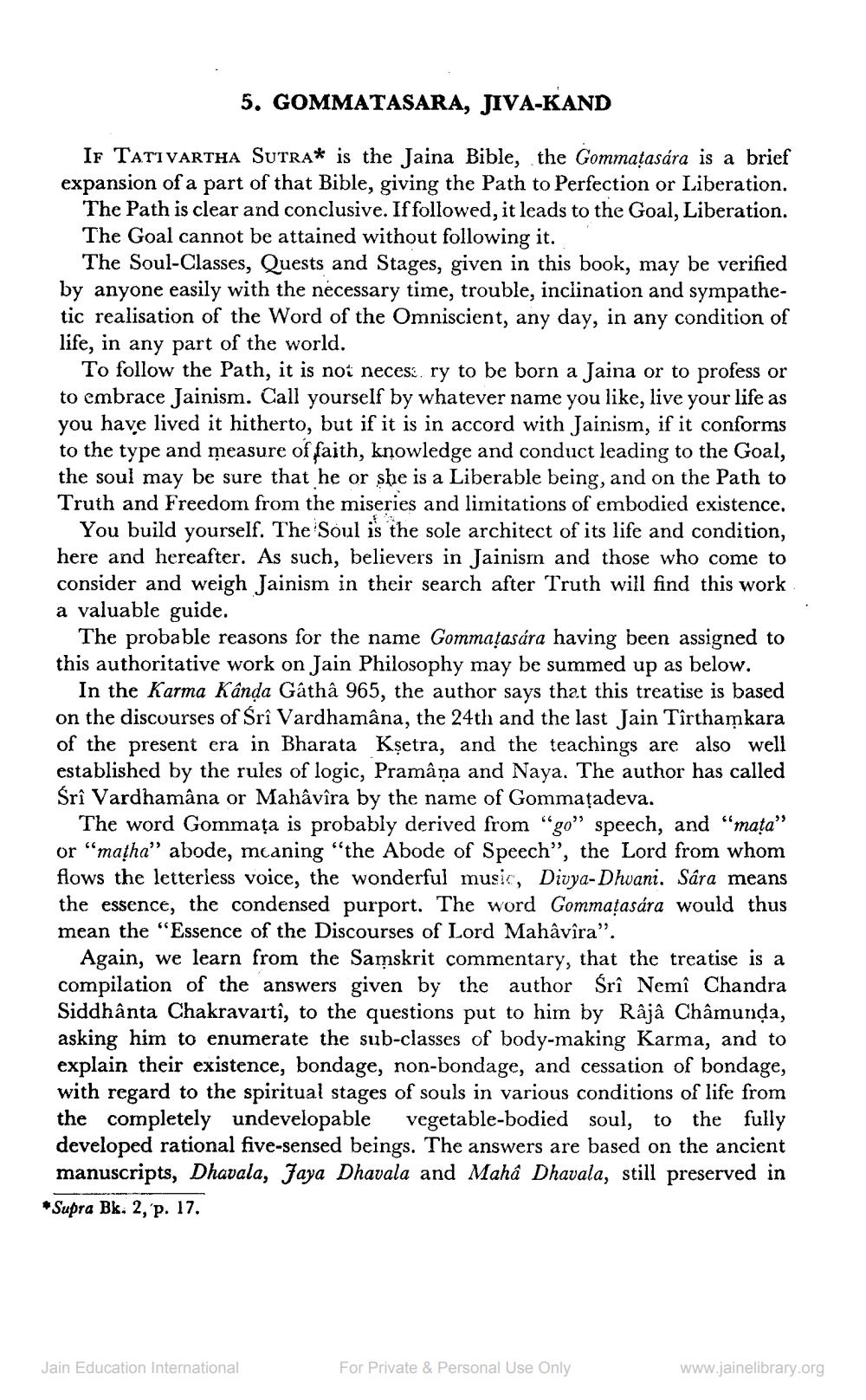________________
5. GOMMATASARA, JIVA-KAND
IF TATIVARTHA SUTRA* is the Jaina Bible, the Gommațasára is a brief expansion of a part of that Bible, giving the Path to Perfection or Liberation.
The Path is clear and conclusive. If followed, it leads to the Goal, Liberation. The Goal cannot be attained without following it.
The Soul-Classes, Quests and Stages, given in this book, may be verified by anyone easily with the necessary time, trouble, inclination and sympathetic realisation of the Word of the Omniscient, any day, in any condition of life, in any part of the world.
To follow the Path, it is not necess. ry to be born a Jaina or to profess or to embrace Jainism. Call yourself by whatever name you like, live your life as you have lived it hitherto, but if it is in accord with Jainism, if it conforms to the type and measure of faith, knowledge and conduct leading to the Goal, the soul may be sure that he or she is a Liberable being, and on the Path to Truth and Freedom from the miseries and limitations of embodied existence.
You build yourself. The Soul is the sole architect of its life and condition, here and hereafter. As such, believers in Jainism and those who come to consider and weigh Jainism in their search after Truth will find this work a valuable guide.
The probable reasons for the name Gommațasára having been assigned to this authoritative work on Jain Philosophy may be summed up as below.
In the Karma Kânda Gâthâ 965, the author says that this treatise is based on the discourses of Sri Vardhamâna, the 24th and the last Jain Tîrthamkara of the present era in Bharata Kșetra, and the teachings are also well established by the rules of logic, Pramâņa and Naya. The author has called Śrî Vardhamâna or Mahâvîra by the name of Gommaţadeva.
The word Gommața is probably derived from "go" speech, and "mata" or “matha" abode, meaning "the Abode of Speech”, the Lord from whom flows the letterless voice, the wonderful music, Divya-Dhvani. Sâra means the essence, the condensed purport. The word Gommatasára would thus mean the “Essence of the Discourses of Lord Mahâvîra".
Again, we learn from the Samskrit commentary, that the treatise is a compilation of the answers given by the author Śrî Nemî Chandra Siddhanta Chakravartî, to the questions put to him by Râjâ Châmunda, asking him to enumerate the sub-classes of body-making Karma, and to explain their existence, bondage, non-bondage, and cessation of bondage, with regard to the spiritual stages of souls in various conditions of life from the completely undevelopable vegetable-bodied soul, to the fully developed rational five-sensed beings. The answers are based on the ancient manuscripts, Dhavala, Jaya Dhavala and Maha Dhavala, still preserved in *Supra Bk. 2, p. 17.
Jain Education International
For Private & Personal Use Only
www.jainelibrary.org




